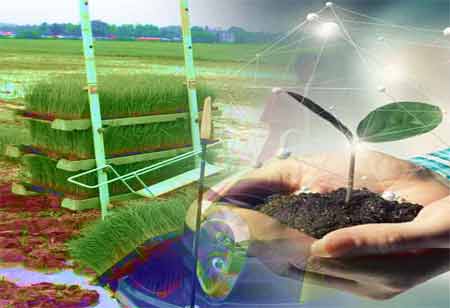Thank you for Subscribing to Agri Business Review Weekly Brief
Latest Trends in Sustainable Agriculture
With the world population increasing rapidly, there is a greater need for sustainable agriculture than ever before.

By
Agri Business Review | Wednesday, July 10, 2024
Stay ahead of the industry with exclusive feature stories on the top companies, expert insights and the latest news delivered straight to your inbox. Subscribe today.
Sustainable agriculture is essential to safeguarding future generations' access to food, preserving the environment, and advancing general health and well-being.
FREMONT, CA: With the world population increasing rapidly, there is a greater need for sustainable agriculture than ever before. It's about more than just about producing enough food; it's about doing so in an environmentally friendly, economically viable, and socially responsible way. These cutting-edge developments in sustainable agriculture open the door to a more environmentally friendly future.
Regenerative Agriculture
Regenerative agriculture goes beyond sustainability; it aims to rejuvenate the soil and the environment. This holistic approach includes crop rotation, cover cropping, and reduced tillage, which enhance soil health, increase biodiversity, and sequester carbon. Farmers can improve water retention, nutrient cycling, and resilience to climate change by focusing on soil regeneration.
Precision Farming
Precision farming uses technology to maximize crop management at the field level. Farmers can monitor crop health, soil conditions, and weather patterns with sensors, drones, and data analytics to help them make wise decisions. With this focused approach, farming operations have fewer adverse environmental effects, boost crop yields, and reduce waste.
Agroforestry
Agroforestry is the integration of forestry and agriculture to provide more productive, diversified, and sustainable land-use systems. By incorporating trees and shrubs onto agricultural land, agroforestry techniques can supply crops and cattle with shade, shelter, and nutrients. This mitigates climate change by increasing production, improving biodiversity, and capturing carbon dioxide.
Organic Farming
Organic farming rejects synthetic fertilizers and pesticides, relying instead on natural processes and materials. This method supports ecological balance and conserves biodiversity. Organic farming practices include using organic fertilizers, such as compost and green manure, and employing biological pest control. Consumers increasingly prefer organic produce, driving growth in this sector.
Aquaponics and Hydroponics
Both hydroponics and aquaponics are cutting-edge soilless growing methods. Aquaponics is the farming method that combines the production of vegetables and fish by using the waste from the fish to fertilize plants, which in turn helps clean the fish's water. Plants grown hydroponically are grown in nutrient-rich water solutions. Urban settings can be used to build up both systems, which would cut down on transportation requirements and bring fresh fruit closer to customers.
Water-Efficient Practices
Due to the urgent problem of water scarcity, water-efficient techniques are becoming more popular in sustainable agriculture. Practices like rainwater collection and drip irrigation maximize water use efficiency. By minimizing water waste and protecting this essential resource, these techniques guarantee crops receive the appropriate amount of water at the proper time.
Renewable Energy in Agriculture
The agricultural sector is increasingly adopting renewable energy sources like solar, wind, and bioenergy. This shift reduces greenhouse gas emissions and lowers farmers' energy costs. Renewable energy can power farm operations, from irrigation systems to processing facilities, making farms more self-sufficient and sustainable.
Community-Supported Agriculture (CSA)
CSA programs connect customers and nearby farmers directly. Members provide farmers with upfront financing and a guaranteed market by purchasing portions of the farm's harvest in advance. Throughout the farming season, clients receive fresh, in-season produce in exchange. CSAs help local economies thrive, encourage community involvement, and lessen the carbon footprint of food transportation.





